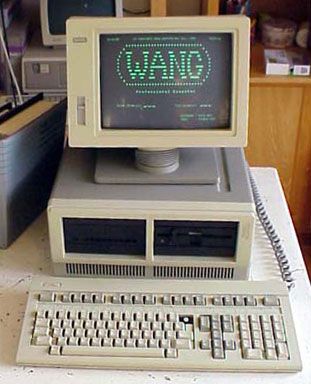The Atlantic‘s Robinson Meyer contributed a piece on “How to Write a History of Writing Software,” subtitled “Isaac Asimov, John Updike, and John Hersey changed their writing habits to adapt to word processors, according to the first literary historian of the technology.” Meyer interviewed University of Maryland English professor Matthew Kirschenbaum, who has just published the first book-length history of word processing, Track Changes.
“It is more than a history of high art. Kirschenbaum follows how writers of popular and genre fiction adopted the technology long before vaunted novelists did. He determines how their writing habits and financial powers changed once they moved from typewriter to computing. And he details the unsettled ways that the computer first entered the home. (When he first bought a computer, for example, the science-fiction legend Isaac Asimov wasn’t sure whether it should go in the living room or the study.)
 “His new history joins a much larger body of scholarship about other modern writing technologies—specifically, typewriters. For instance, scholars confidently believe that the first book ever written with a typewriter was Life on the Mississippi, by Mark Twain. They have conducted typographical forensics to identify precisely how T.S. Elioit’s The Wasteland was composed—which typewriters were used, and when. And they have collected certain important machines for their archives.”
“His new history joins a much larger body of scholarship about other modern writing technologies—specifically, typewriters. For instance, scholars confidently believe that the first book ever written with a typewriter was Life on the Mississippi, by Mark Twain. They have conducted typographical forensics to identify precisely how T.S. Elioit’s The Wasteland was composed—which typewriters were used, and when. And they have collected certain important machines for their archives.”
Kirschenbaum says that while he can’t say for certain which writer was first to compose using a word processor or computer, notable candidates are science-fiction author Jerry Pournelle and author John Hersey, who edited Hiroshima on a keyboard and used to computer to generate camera-ready copy.
“Another interesting story that’s in the book is about John Updike, who gets a Wang word processor at about the time Stephen King does, in the early 1980s. I was able to inspect the last typewriter ribbon that he used in the last typewriter he owned. A collector who had the original typewriter was kind enough to lend it to me. And you can read the text back off that typewriter ribbon—and you can’t make this stuff up, this is why it’s so wonderful to be able to write history—the last thing that Updike writes with the typewriter is a note to his secretary telling her that he won’t need her typing services because he now has a word processor.”
Pictured: Stock photo of typical Wang word processor from the 1980s.

The bit about John Hersey is a bit garbled. Hiroshima appeared in the New Yorker in 1946, and surely was not written or edited on a computer. In the early 1970s he edited some (unspecified) other novel on a mainframe computer at Yale.
So are you saying that if I looked on the back of my typewriter ribbon I’d be able to see the words I’ve typed? Is this common amongst all ribbons? Moreover, is it well known that our words are recorded on the backs of the ribbons we use? I am new to typewriters and am intrigued. Thanks!
My introduction into the computer world started in 1984 with a Wang word processor – I was one of the first in the car company in Oxford to go from the typewriter to IT. I went on a course in Birmingham to learn and loved it, and was eager to get back to work to use my new WP which looked very much like your photo. Some years later we ventured over to using DecMate and long after I’d left the company I trained myself up on the internet in the 90’s.
Mind you, there’s nothing quite like putting a piece of paper into a typewriter and producing a masterpiece with manual centering, tabulation, fully blocked or indented layout etc etc and hearing the clack-clack of the keys. The skill of typing has gone.
Mind you it’s easier now to produce newsletters, websites etc